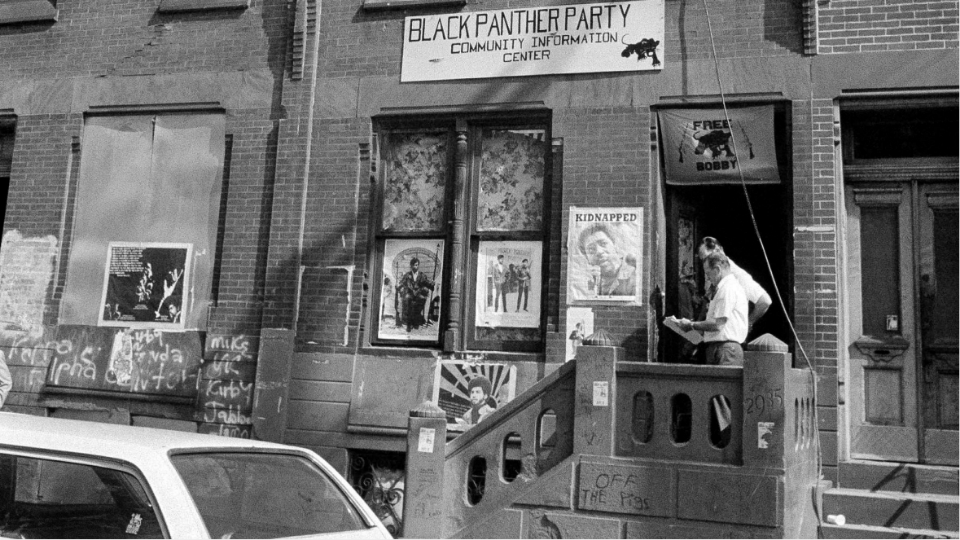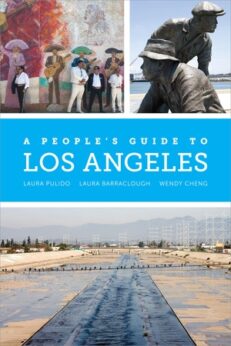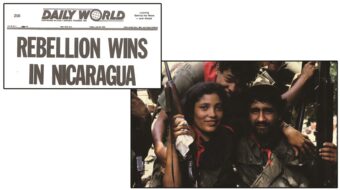
LOS ANGELES — In one of the several publications I read, I recently saw an ad from the University of California Press advertising its People’s Guide series. The five titles in the series include Los Angeles, New York City, San Francisco Bay Area, Greater Boston, and Orange County (Calif.).
I wondered how much of the L.A. story I already knew, and how many gaps remained in my knowledge. I found out: A lot more gaps.
Which goes to prove: A good guidebook is not only for tourists but for residents as well. Because I had just seen the ad, I assumed these were recent books. When my review copy of A People’s Guide to Los Angeles arrived, I noticed that its publication date was 2012, so it’s a decade old already. Which can be a long time. Places change, old phone numbers might not work, hours of business may not be current, and local eateries in the vicinity of highlighted locations may no longer exist. Verifying current information is advised.
Travel guides have character. A Fodor’s Guide to Europe (on $5 a Day when I first started exploring the world!) is going to be quite different from a Michelin Guide with its famous restaurant ratings, or from a Lonely Planet book aimed at younger, hipper, more vigorous travelers. They appeal to different clienteles, by income, education, and other factors. An old friend of mine in New York City had some success many years back with a public bathroom guide called Where To Go.
The very word “tourism” summons up a class of people with disposable income, time to get away unencumbered, and only a superficial interest in the places they visit (museums, amusement parks, landmark churches, picturesque bohemian quarters). Many may return home with clearer impressions (and photos) of some memorable meals than anything else, and may never once have had anything but a passing exchange of conversation with a local, a hotel clerk, a taxi driver, a tour guide. These are only a few ways strangers can experience a place.
Other guide books, says the UC Press, “do not reflect the reality of life for most urban residents—including people of color, the working class and poor, immigrants, indigenous people, and LGBTQ communities—nor are they embedded within a systematic analysis of power, privilege, and exploitation. We need a different kind of guidebook: one that explains power relations in a way everyone can understand, and which shares stories of struggle and resistance that inspire and educate activists, students, and critical thinkers.”
 As such, the People’s Guide series takes a reader into a deeper appreciation of why certain neighborhoods are the way they are, why freeways were constructed where they were, why the population of this or that district is so overwhelmingly African-American or Latino, etc. It’s as though once he had completed writing A People’s History of the United States, Howard Zinn then turned to guidebooks that would show how and where that history evolved.
As such, the People’s Guide series takes a reader into a deeper appreciation of why certain neighborhoods are the way they are, why freeways were constructed where they were, why the population of this or that district is so overwhelmingly African-American or Latino, etc. It’s as though once he had completed writing A People’s History of the United States, Howard Zinn then turned to guidebooks that would show how and where that history evolved.
The L.A. guide is divided into six regional sections and a seventh chapter with suggested routes covering special interests travelers might wish to focus on: First Peoples, Radical People-of-Color Movements of the 1960s and ’70s, Queer Politics and Culture, Independent and Alternative Media, Economic Restructuring and Globalization, New Organizing, and Environmental Justice. Those itineraries involve at least a day-long commitment with much driving across a large urban metropolis.
The regional chapters include North Los Angeles, The Greater Eastside and San Gabriel Valley, South Los Angeles, The Harbor and South Bay, The Westside, and The San Fernando Valley, and North Los Angeles County. Anyone who lives in L.A. or its environs, and surely anyone who’s visited, knows that each of these chapters in and of itself encompasses a vast territory.
It took me a while to understand the organizing principle of the book and its contents. One might presume that the 20-odd site listings for each chapter would lead a visitor conveniently from one to the next. I was frequently struck by how distant one site was from the next and the next. Until I realized that within each chapter the sites are arranged not in logical geographical procession but in alphabetical order! Since one excellent feature of the guide is its index, locale listings from A to Z didn’t make much sense to me. If from afar you’re only reading the text for its content and you’re not actually on the ground using it for reference, I guess this does not present a problem. But an actual visitor to L.A. with the guide in hand would find this unhelpful. If you do plan to use this guide in situ, I have this suggestion: Read the chapter, pick out the sites you want to see, mark them in red on the clear, useful map provided as each chapter’s frontispiece and plot out your route.
Some sites are discussed in more generic terms, such as neighborhoods where intense struggles over integration took place, symbolized by a single dwelling where the first (Latino) (Black) (Japanese) family moved in. The house itself is not much to see, but this is the nature of “people’s history” told “from the bottom up.” We are looking at L.A. not to lift the curtain on the rich and famous of Beverly Hills—take the Hollywood Celebrity Tour for that—but to gain insight into mass movements of the poor and working people, whose achievements are not recorded in personal form but in the aggregate.
For example, might you want to pay homage to the historic Black Panther Party headquarters at 4115 S. Central Ave. in South L.A. that was stormed by hundreds of LAPD officers one early morning in December 1969? Well, they demolished the building, and the Southern California chapter eventually closed down. “The former site,” the Guide tells us, “photographed in 2007, is now a parking lot flanked by a Mexican market and small businesses” (as of 2012). Some of this history really is better reading than seeing.
The book is a handy 6 by 9 inches on glossy paper, with clear, distinct illustrations, 91 in color and 67 in black and white, with six line illustrations and 14 maps. And it is well written, I must say. Perhaps it’s the genre of travel writing itself that brings out the lyrical impulse in writers, but this is the kind of wordsmithing worthy of an Emile Zola, a Jack London, a Mike Gold, or George Orwell. I found myself underlining not only certain locales of interest but the proletarian philosophy expressed in many passages:
“The struggle over who and what belongs in suburbia, and who and what does not, is vibrant and ongoing, the racial and economic concerns and continued desire for prestige and exclusivity are often submerged in debates about the quality of schools, tax rates, and crime and safety.”
Although much of the information provided in the Guide would not necessarily lead me to visit the site in question, I did learn quite a lot of interesting information. For instance, “The ironically named California Act for the Government and Protection of Indians of 1850 allowed any white person to post bail for convicted Indians whom he could then require to pay off the fine by working for him—a new form of slave labor.” That Griffith Park is “the largest urban park in the United States.” That the “Wat Thai (Thai Temple) of Los Angeles is the largest Thai Buddhist temple in the nation.” That World War II improvements “transformed LAX into the nation’s first airport designed for the jet age.” And that (at least as of 2012), the response to the April 29, 1992, acquittal in the Rodney King police beating case “led to the largest urban unrest in U.S. history.” Or that “one-third of the Japanese labor force [in the 1930s] consisted of gardeners”—as independent workers “with relatively little capital,” they could earn several times what a factory or agricultural worker could make.
And the Guide offers a different, critical perspective that a more commercial Baedeker might not. For example, “California’s native plants are ideally suited to their climate and need minimal irrigation and maintenance. Since the beginning of Spanish incursions in the 1500s, however, California’s native species and plant communities have been under attack by invader species. Especially pernicious are the nonnative grasses (such as green lawns) and other plants with which Southern Californians seek to replicate eastern U.S. and European landscaping.”
Summing up a historic 1933 garment workers’ strike, the authors use their academic training and populist politics to write this little gem of clear, expository prose:
“The final settlement did not result in major economic benefits for the workers, but the strike was nonetheless extremely significant in terms of regional labor, gender, and racial politics.
- First, it laid the groundwork for the formation of the International Ladies’ Garment Workers Union in Los Angeles.
- Second, the strike was one of the first instances when ethnic Mexican workers bargained under American unions rather than through independent unions or worker associations.
- Third, it provided Mexicanas in Los Angeles with their first taste of what it was like to participate in organized labor.
- Fourth, it proved to the world that Mexican women could and would organize (which many people had doubted), challenging stereotypes of Mexicanas as docile, nonconfrontational, and easily exploitable workers.”
The three authors, with their 2012 biographical data, include Laura Barraclough, Assistant Professor of American Studies, Yale University, author of Making the San Fernando Valley: Rural Landscapes, Urban Development, and White Privilege; Wendy Cheng, Assistant Professor of Asian Pacific American Studies and Justice & Social Inquiry, Arizona State University, award-winning photographer and author of The Changs Next Door to the Díazes: Remapping Race in Suburban California; and Laura Pulido, Professor of American Studies and Ethnicity, USC, author of Black, Brown, Yellow, and Left: Radical Activism in Los Angeles and Environmentalism and Economic Justice: Two Chicano Struggles in the Southwest.
Documenting 115 little-celebrated sites in Greater L.A. where struggles related to race, class, gender, and sexuality have occurred, A People’s Guide to Los Angeles includes a wealth of bibliographical cross-references and aids. Though it has its formal limitations as either a guidebook per se or a general history of the city and county, it interrogates critical power relationships as the city and economy take shape over the centuries, and how this history remains embedded and mostly still visible in the ever-shifting landscape. If you live in L.A. or love the city, it’s worth a place in your library.
A People’s Guide to Los Angeles
by Laura Pulido, Laura R. Barraclough, Wendy Cheng
University of California Press, 2012
328 pp. ISBN: 9780520270817












Comments